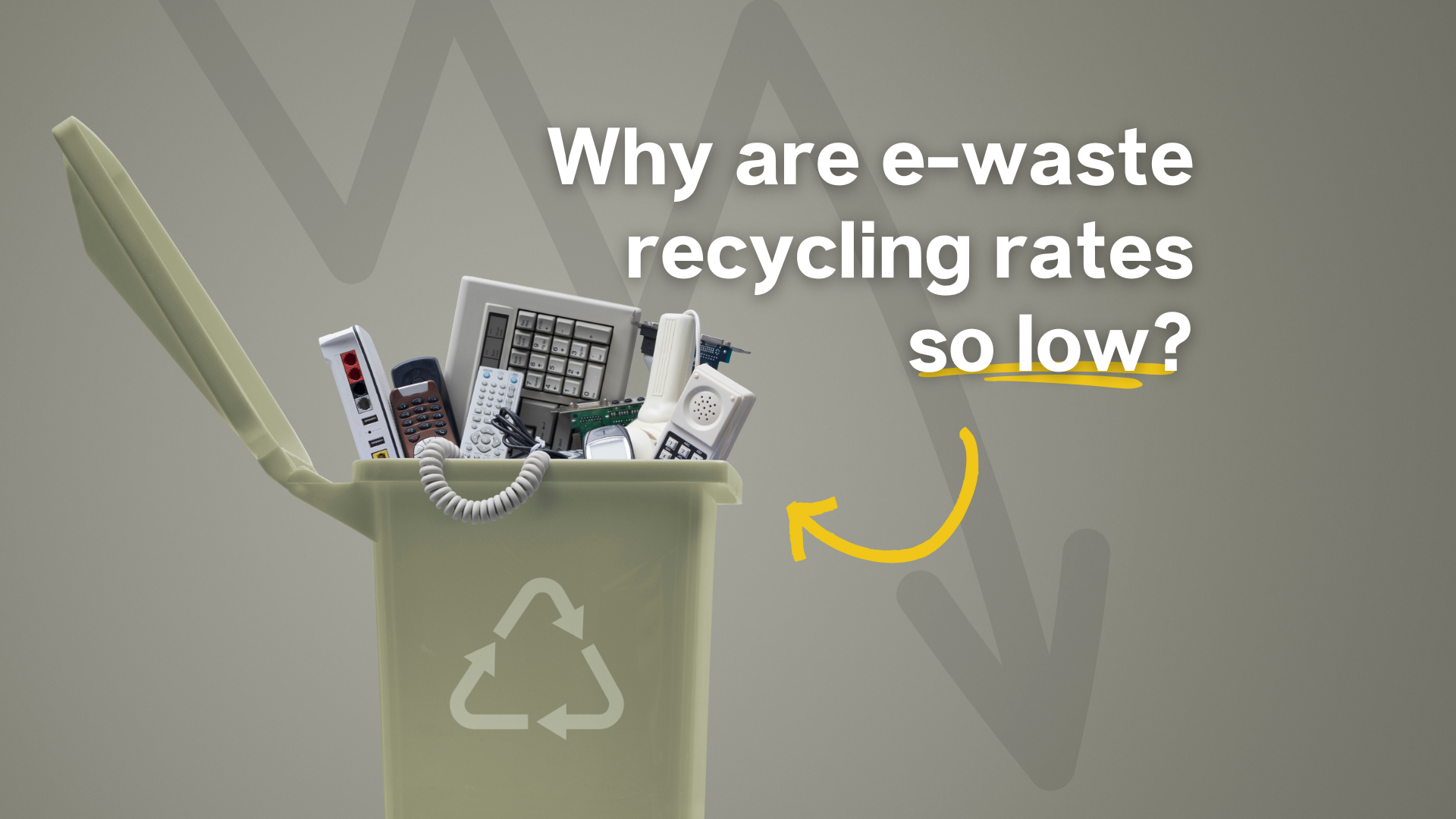

The recycling rates for electronic waste (e-waste) in the U.S. have been a significant concern, as they reflect the effectiveness of the nation's recycling infrastructure and technology. While there has been progress in some areas, e-waste recycling rates remain relatively low when compared to the volume of e-waste generated annually. Several factors contribute to these low rates, including a lack of widespread consumer participation, insufficient recycling infrastructure, and challenges in the economics of recycling.

The U.S. is one of the largest producers of electronic waste globally, with millions of tons of e-waste generated each year. However, despite the significant environmental and economic potential of recycling these materials, the recycling rates have been low. According to estimates, less than 20% of e-waste is properly recycled, with the remaining majority often being discarded, incinerated, or exported to developing countries for informal processing. This low recycling rate is concerning, as e-waste contains valuable materials such as precious metals, copper, and plastics that could be recovered and reused.
A major reason for the low recycling rate is the lack of consumer awareness about e-waste recycling programs. Many consumers are unaware of local collection events, drop-off locations, or take-back programs offered by manufacturers or retailers. In addition, consumers often prefer the convenience of discarding their old electronics in household trash or through informal channels rather than participating in established recycling programs. This behavior is partly due to the absence of clear incentives or education campaigns to encourage responsible disposal.

A significant portion of the U.S. e-waste is exported to countries in Asia, Africa, and Latin America, where it is often processed in unsafe and environmentally harmful ways. This trend, known as e-waste dumping, has become a critical global issue, as it poses significant risks to both human health and the environment. Informal recycling operations, often performed in developing countries with little regard for environmental standards, involve the burning of e-waste to extract metals, which releases toxic chemicals such as dioxins, mercury, and lead into the air, soil, and water.
The exportation of e-waste complicates the recycling issue in the U.S. by undermining domestic recycling efforts. While some e-waste is properly processed in advanced facilities in the U.S., the overwhelming amount that is exported means that the country is not fully realizing the economic and environmental benefits of recycling its electronics.
Technological limitations have also contributed to the low recycling rates for e-waste in the U.S. The recycling industry still faces challenges in effectively handling complex electronics, such as smartphones, flat-screen TVs, and computers, which contain a mix of materials that require specialized processing techniques. Many current recycling technologies are manual and focus on simple processes like shredding and magnetic separation, which are effective for recovering materials like steel, copper, and aluminum, but they are less efficient for extracting more valuable materials like gold, silver, and rare earth elements.
The manual labor involved in many recycling facilities is also inefficient and dangerous for workers exposed to hazardous materials. More advanced technologies, such as automated sorting systems and AI-driven processes, are still in the early stages of adoption. While these technologies show promise in improving the efficiency of recycling, they require significant investment in infrastructure, and widespread adoption remains limited by cost concerns.
Several barriers stand in the way of increasing e-waste recycling rates in the U.S. A major challenge is the high cost associated with recycling e-waste, especially when compared to traditional mining operations. Extracting valuable materials from e-waste requires energy-intensive processes, and the cost of labor and technology often exceeds the revenue generated from the sale of recovered materials. This economic imbalance discourages investment in advanced recycling technologies and infrastructure.
Additionally, the current lack of national standards for e-waste recycling means that recycling practices vary widely across the country. Some states have enacted laws mandating e-waste recycling and requiring manufacturers to take responsibility for their products, but these laws are not universal. Without federal oversight and standardization, the infrastructure for recycling is fragmented, and progress is slow. There is also a lack of stable demand for some recovered materials, such as certain plastics and glass, which are often low-value commodities in the recycling market.
To improve the e-waste recycling rate in the U.S., several strategies can be employed. First, expanding and improving collection programs is essential. National or state-level take-back systems can encourage consumers to return their old electronics for recycling. Offering incentives, such as discounts on new products for returning old devices, can further boost participation. In addition, public education campaigns to raise awareness about the environmental and economic benefits of e-waste recycling can encourage responsible disposal behaviors.
Second, the development of new technologies for recycling complex electronics is critical. As mentioned earlier, automated sorting technologies, coupled with AI and robotics, offer significant potential to increase the efficiency of recycling. These technologies can be used to sort and separate different materials in e-waste more effectively, improving recovery rates and reducing reliance on manual labor.
Finally, increasing the demand for recycled materials will help make e-waste recycling more economically viable. As the market for recovered metals, plastics, and glass grows, the incentive to recycle will increase. This can be achieved through government incentives, industry partnerships, and technological innovations that improve the quality of recycled materials.
In conclusion, while the U.S. has made some strides in e-waste recycling, much remains to be done to improve recycling rates. The infrastructure is fragmented, and technology has yet to catch up with the complexity of modern electronics. Addressing these issues will require collaboration between the government, industry, and consumers, as well as significant investments in new technologies and improved recycling systems. Only then will the U.S. be able to unlock the full potential of e-waste recycling, both economically and environmentally.